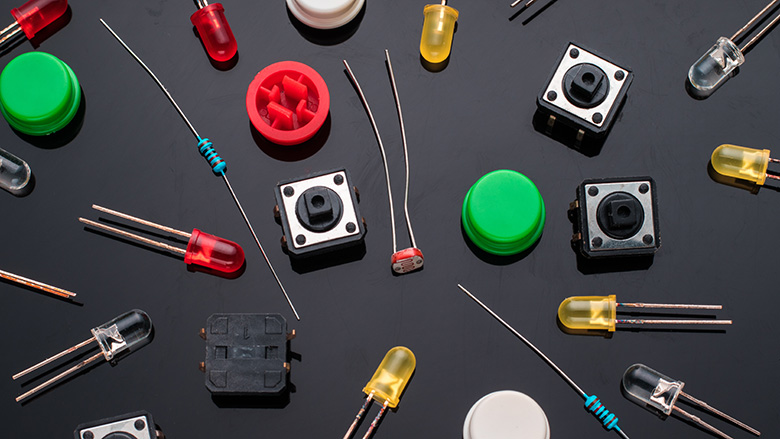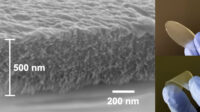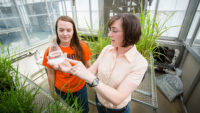Safeguarding the world against environmental hazards and pollution with IoT-based monitoring
Q&A with Quinn Jones, Senior Product Manager at Digi International.

Photo credit: Igor Nikushin / iStock / Getty Images Plus
Remediation Technology recently spoke with Quinn Jones, Senior Product Manager at Digi International about the different connected sensors available in the environmental remediation industry.
1. How are connected sensors deployed in water management systems and environmental condition monitors today?
Monitoring water levels in reservoirs, tanks and settling ponds is a critical part of managing water as a resource. Connected sensors can monitor temperature, moisture, water levels, leaks, and other physical characteristics in irrigation systems, pipelines, tanks, weather stations, and industrial machinery anywhere on the planet. Examples range from monitoring water quality and levels, to irrigation systems and weather stations. Today’s irrigation systems have evolved and instead of responding to on/off inputs, they are connected to soil moisture sensors and weather stations to better understand when the soil needs moisture. By using intelligent, connected devices with embedded communications modules, important information can be processed using edge computing technology – rapidly sending critical data to the cloud or a data center for action or analysis.
2. What’s the status of data cataloging at various cleanup sites around the country, where connecting to the internet can be difficult?
Remote data acquisition has also evolved significantly as new technologies have been introduced. Collection of data from sensors connected to dataloggers can now be automated through cellular and other wireless technology. Where once it sometimes relied on a person retrieving the data manually on a USB memory device, now receiving the data through a cellular gateway is very common. In locations where cellular coverage might not be the greatest, long range wireless protocols are helping to bridge the gap. Not only can the data be more available through the “cloud” via a cellular gateway, but intelligence can be added to the cellular gateway as well as the cloud to send notifications to site managers if certain sensor data is critical.
3. What are some of the products that increase real-time connectivity and where are we in the rate of adoption for the most cutting-edge tech?
Both cellular and RF technologies have progressed over time and continue to progress. Sensors connected to a variety of wireless protocols that then connect to Cellular gateways continue to be refined for power consumption and data flow, which makes battery powered applications more manageable. New cellular protocols allow for faster transfer of data and with management capabilities, allow quick access to data and have been created with sensitivity to lower data rates as well as lower data cost requirements. Wireless protocols have become much more efficient for battery powered applications and also dense networks where hundreds of sensors may be trying to connect with a gateway to report data and other status events. Cellular technology has also become more “embeddable” in the sense that it can be integrated directly with sensors and batteries to provide a battery powered, cellular sensors for specific applications. AI (artificial intelligence) and ML (machine learning) are also being implemented to more quickly identify points of failure and data trending on critical equipment and machines being used in water management & environmental monitoring.
4. In what ways can we improve not just the gathering of high-resolution data, but its analysis as well, for the purposes of remediating polluted sites and water?
Wireless connectivity to sensors has allowed us to have more “real-time” data at our finger-tips. Cellular and RF technologies are making this easier than ever before to collect data from sites. The cost and ease-of use of this technology has also improved to allow a broader adoption which impacts everyone. Having “connected sites” allow for not only visibility of the data, but implementation of software services that can assist in analyzing events and trends. That data can also be used to model preventative measures, which in turn will help us proactively protect our environment.
5. What are the pollutants you specialize in detecting at Digi International and how does the rapid detection of them help on the remediation front?
Digi International is an innovative IoT company focused on the internet of things (IoT); connecting people to people and all of us to the technology we rely on every day. Digi helps companies build and implement wireless technologies in a variety of applications including water management systems and environmental monitoring. Digi’s IoT connectivity and environmental monitoring sensors provide an effective, efficient way for customers to monitor and support a healthy environment, providing the tools for analysis and preventative detection of contaminants including toxic substances, pH and oxygen levels in water, and carbon monoxide, methane and H2S gases in industrial and air quality monitoring. With speed of detection a critical factor, environmental monitoring through IoT offers new and innovative ways to track and mitigate environmental challenges, helping prevent leaks and contamination – reducing the impact should a failure occur and minimizing the cost to the business, the population and the environment.




